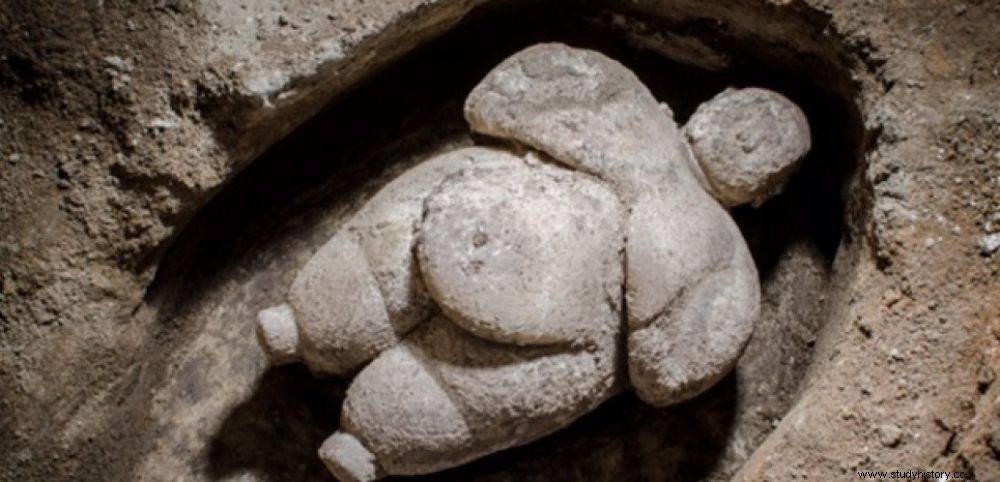 Female sculpture over 8000 years old discovered at the site of Catalhöyük, Turkey.
Female sculpture over 8000 years old discovered at the site of Catalhöyük, Turkey. WOMAN. Finely sculpted in white marble, the delicate statuette, 17 cm high and weighing 1 kg, appeared whole and intact under the astonished eyes of archaeologists during archaeological excavations carried out on the Turkish site of Çatal Höyük, in central Anatolia by Ian Hodder, American anthropologist from Stanford University (USA). It represents a standing woman with imposing forms, which completes an already prestigious collection of several thousand statuettes, most of which represent animals.
 Profile view of the Neolithic statuette recently discovered at Catal Höyük, in central Anatolia (Turkey). © Daily Sabah
Profile view of the Neolithic statuette recently discovered at Catal Höyük, in central Anatolia (Turkey). © Daily Sabah
It is because of the exceptional preservation conditions of the remains that this prestigious ancient agglomeration has been studied since the 1960s. It has indeed yielded countless bas-reliefs and wall paintings, as well as a profusion of ritual objects and figurines kneaded in clay, or carefully shaped in stone, basalt, alabaster or marble. Some of them having been recovered from grain reserves, researchers had in the past been inclined to make a link between femininity and agriculture. "One of the most famous of these figures, represented seated in the process of giving birth with on either side a beast on which she places her hand, is at the origin of a theme that we found in many later Mediterranean mythologies , explains Jean-Paul Demoule, professor of European protohistory at the University of Paris I (Panthéon-Sorbonne) and member of the Institut Universitaire de France, joined by Sciences et Avenir. These female figurines from the Near Eastern Neolithic, like the Venuses of the Paleolithic, have fueled an abundant literature on the "mother goddess », fertility and a primitive matriarchy “, continues the archaeologist. The most renowned of these developments being those of the American archaeologist of Lithuanian origin Marija Gimbutas (deceased in 1994), who had seen in these numerous female reproductions the existence of an original matriarchal religion, at the head of which was a great deity of fertility and motherhood.
 Statue of the "Lady of the Beasts" by Catal Höyük, (6000-5500 BC). © Anatolian Museum of Civilizations.
Statue of the "Lady of the Beasts" by Catal Höyük, (6000-5500 BC). © Anatolian Museum of Civilizations.
"These sculptures of women seated or standing with their hands under their breasts, are found in a position that is nevertheless quite traditional in the female representations of the Neolithic of the Near East “, continues the anthropologist. They are still found a little later, between 6100 and 5500 BC, in the Halaf culture, in south-eastern Turkey, in Syria and in northern Iraq. It is only from the Chalcolithic, around 5000 BC, when societies begin to differentiate, that in increasingly unequal societies, male figures of men in arms or in positions of power will appear in large numbers. , like statue-menhirs or sovereigns.
